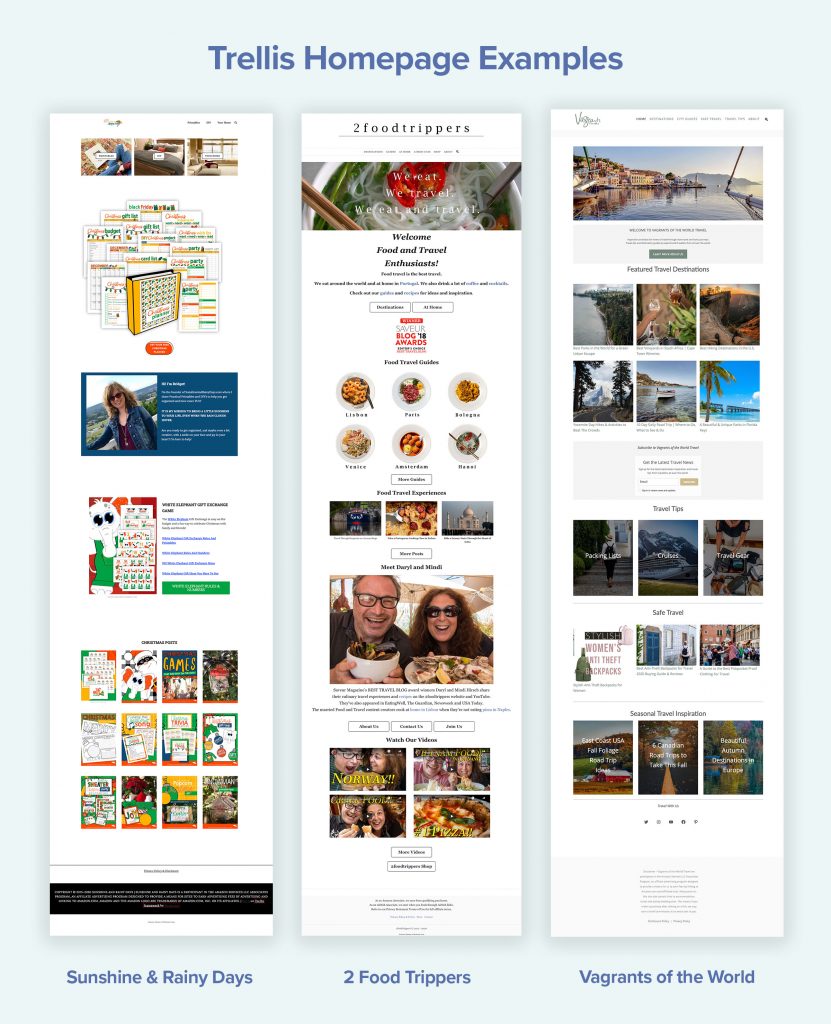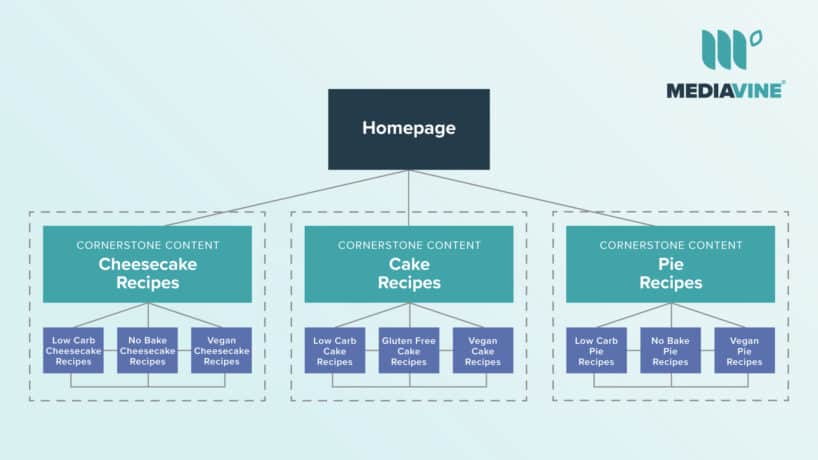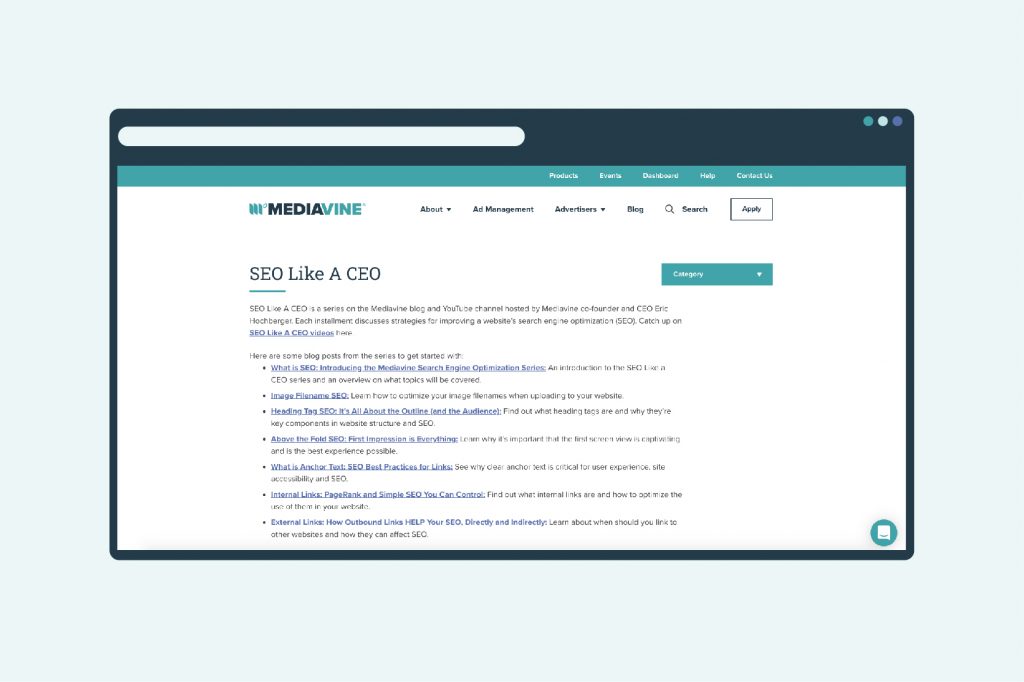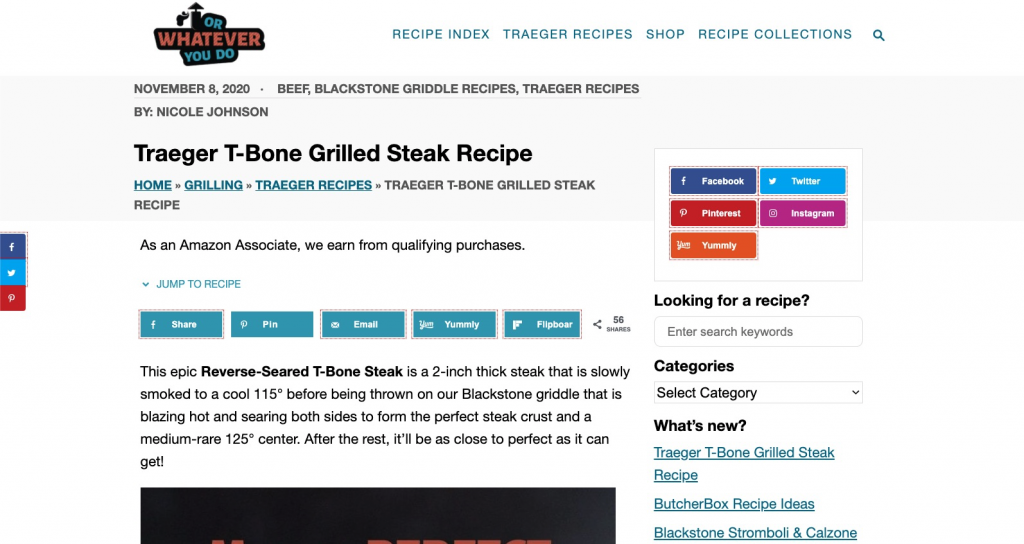When it comes to navigating your website, the site hierarchy or site structure, is extremely critical for users and search engines alike.
Allowing for easy, effective navigation of your website sounds obvious, because every user and publisher knows (and wants) that.
Key Takeaways
- Site hierarchy, or the navigation and link structure of your site, is important for both your audience and improving your SEO.
- Your homepage is your MVP (Most Valuable Page) for site hierarchy. Any content that you want to rank should never be more than 1-2 clicks away from your homepage.
- Curate a homepage experience for your audience and your rankings. Try using a static homepage to take it beyond your 10 most recent posts and more easily link around to your content.
- Since you can’t link to everything, use categories and landing pages to keep your top content within 1-2 clicks for your audience.
- Make use of your site navigation, footer and sidebar to link to your top content.
- Internal links inside and below your content are also great tools for site hierarchy.
- If your content isn’t easy for your viewers to find, it won’t be easy for Google either!

So what do we mean by site structure, and why does it matter?
When we’re referring to site structure, we’re talking about how content is organized on your website — in other words, how visitors can navigate the site to find the content they want.
From an SEO standpoint, this is important enough that the Google SEO Starter Guide features an entire section on site hierarchy.
If you’ve read the starter guide (if you haven’t, you should), you’ll see that it focuses a lot on URL structure. We’ve already published an entire guide to optimizing your URL structure (see the link above), so we’re focusing on the rest of Google’s hierarchical advice in this article.
Homepage Navigation
There are a number of components of site structure, but at the heart of it all is the navigation of your homepage. Think of it from the perspective of a user first visiting the homepage. How do they get to the content?
When we first discussed PageRank, you may remember us saying that the homepage is your most valuable page when it comes to link equity.
This is because — if you’re following standard web design principles, every page will link to your homepage, either through linking on your logo, via your navigation or perhaps breadcrumbs.
It’s also the most likely place for other websites to link to, so it makes sense that it’s your most valuable page — from an SEO perspective.
Moreover, it’s the most frequent entry point for returning or loyal users, who you’ll want to present with content as effectively as you can.
This is why when we discussed cornerstone content, we emphasized that your most valuable content should be 1-2 clicks away from the homepage.
Anything beyond those 1-2 clicks, users might not find it easily from the homepage. If your users can’t find your content, neither can Google.
That’s why it’s crucial to think of your site structure from the perspective of navigating from the homepage, and ensuring that all content you want to rank on is one or two clicks away.

Okay, so how should you ideally set up your homepage navigation?
If your homepage is basically just your 10 most recent posts, then you’re probably going to struggle. The good news is that even with WordPress, your homepage doesn’t have to be set up that way.
WordPress offers publishers the concept of a static homepage, in which the homepage becomes another page you have complete control over. You can use Gutenberg to edit your homepage this way.
In fact, this is what we recommend for publishers running Mediavine’s Trellis themes. Although we included a default homepage of your most recent posts, that’s not always the best experience for users.
With Trellis, you can create custom, static homepages. Take a look at these three sites that are running Trellis:

So what should your homepage be?
That depends on your site and how you can organize your content. This is where categories, tags and landing pages come in handy.
First, you can and should list some of your recent posts. Using Gutenberg, you can use the built-in Recent Posts block or the upcoming Mediavine Create Indexes to make them look pretty.
This is key for both users and search engines to see your most recent content. Otherwise, how will they identify and keep up with it?
Beyond the new posts you’re churning out, consider the perspective of a user when it comes to finding older content as well.
Think about listing some of your most popular posts — a great way to help improve rankings on some of your cornerstone content.
Of course, there’s limited space on your homepage, and you can only have so many links on there without it becoming cumbersome. This is where your categories or landing pages can play a major role.

Category and Landing Pages
While being one hop away from the homepage will give your content the best shot at SEO success, sometimes being two clicks away is the best you can hope for — especially when you have a lot of content.
For example, this is where you could link to the “Cheesecake Recipes” category on your homepage, with the ultimate goal of boosting the “Strawberry Cheesecake Recipe” you’re trying to rank on.
It’s not just categories you can link to, either — Google recommends that websites feature a separate navigation or sitemap page.
Note: We’re not talking about the XML Sitemap.
Those are super important for crawling, but not necessarily ranking and we’ll talk about them in a future blog post.
In this case specifically, we’re talking about a sitemap page for users — a designated navigation or landing page.
Basically, you create landing pages (posts or pages in WordPress) that you can link to from your homepage, with those landing pages linking to your other pages. This keeps everything of value within 1-2 hops.
This style of sitemap can’t link to everything, but you can make many of them. Let’s use a simple example everyone can relate to.

If you were, say, the CEO of Mediavine and writing both an “SEO Like A CEO” Series and an “Improve your RPM” series, you could build a navigation page for each and link to them from your homepage.
In this not-really-hypothetical case (as you probably figured), I used two category pages: SEO Like A CEO and Go For Teal, with custom content up top. Hey, another cool feature of Trellis!

In any case, even using a static homepage with Gutenberg can only be so long before users give up on scrolling. So where else can you get links to the posts you want to rank on?
Site Navigation, Footer, Sidebar, and Other Linking Spots
Publishers actually have a few more valuable spots to link to top content on all of your pages: your site navigation, your footer and your sidebar (on desktop and wider tablet devices).
The navigation at the top of your page can link to your most popular pages. If you use a nested nav bar, you can often fit 10-20 links up top in a very user-friendly fashion.
This is a great way to allow users to find content on ANY page of your site. Think about it: If you link from every page, by definition, it’s linked from the homepage AND every other page on your website.
That’s a great way to signal to your user and Google that this page is extra important. The same rule can apply to the footer, but since that’s lower in your page, it’s less likely to be clicked.
With limited space available, try to prioritize placing your most important navigation in the header and putting lesser-used things (like your privacy policy, legal requirements, etc.) in the footer.
Another great spot to capture user attention? If you maintain a shorter sidebar, users will likely see a few widgets before they tune out. We typically recommend running things like a search, about me and something like the top posts-style widget described above.
Using these three spots, in addition to your homepage, should hopefully position all of your top content within a few clicks for users.
Finally, remember that your individual posts are a likely entry point for a large portion of your readers. This typically opens up another great spot to show additional content to readers: Both inside the content via internal links and below the post with related content-style widgets.

Breadcrumbs
Google also recommends the use of breadcrumbs in your navigation, and I completely agree. These are a great way to link to your homepage and the landing page or category containing a post.
Breadcrumbs, like so many things we touch on in passing, are worthy of a separate blog post that we’ll write in the near future, but here’s a quick look at our Vice President of Support Nicole Johnson‘s site.
See the text “Home > Grilling > Traeger Recipes” below her post title? Those are the breadcrumbs.

Site Structure Sets You Up For Success
Like so much of the SEO advice we provide at Mediavine, there’s not a lot of technical mastery you’re missing. A commitment to the right principles and the right thought process goes a long way.
Think like a user to improve your website experience, and Google will likely reward your efforts. As always, our award-winning Publisher Support team is available to help with additional questions.
The post Site Structure: Navigation Matters for SEO appeared first on Mediavine.